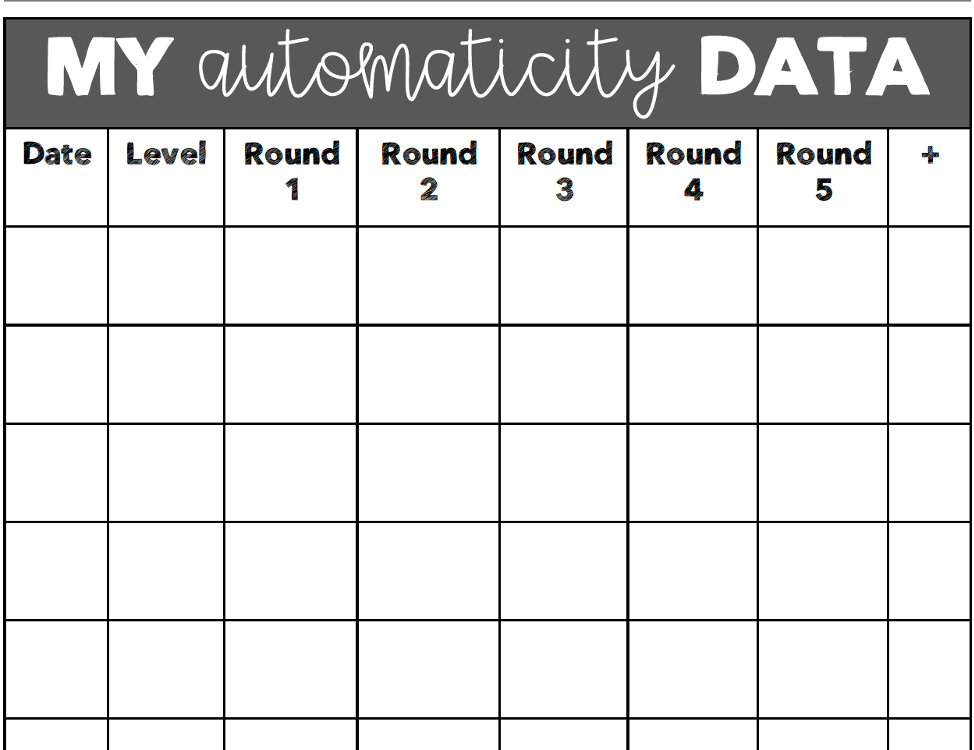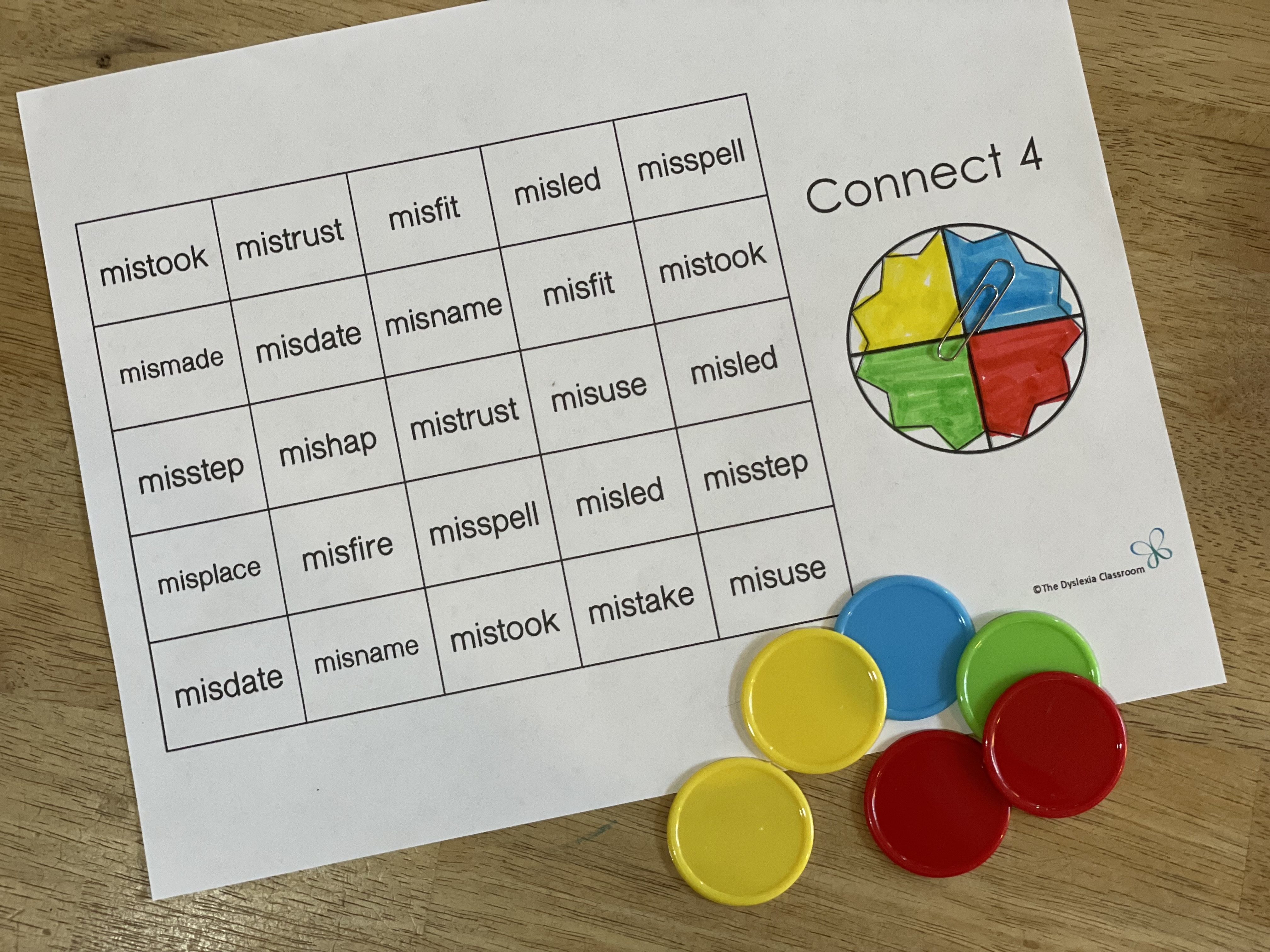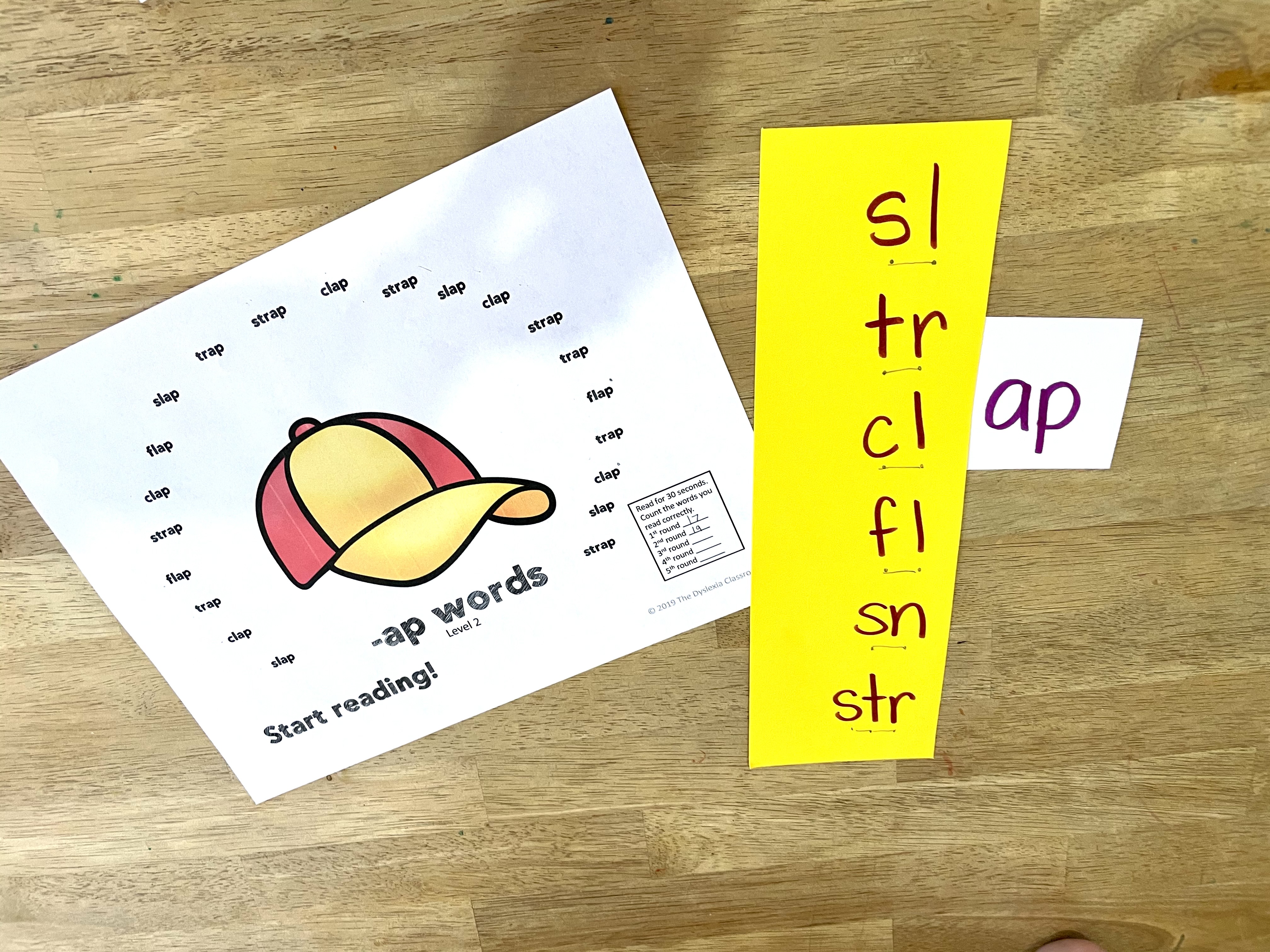Building Fluency in Our Students
Hi, friends! I'm back this week chatting about a popular topic that I've been discussing with The Dyslexia Classroom Community over on Instagram. Many have reached out to me asking for strategies on building fluency. I asked the community if this is something that would be helpful, and the resounding answer was yes. In this post, I will be discussing what fluency is, how to build it, and providing you with resources to help. Reading fluency is essential to our students' success because research has found that developing it is one of the five pillars of reading instruction.
🤔 So, what is fluency?
Fluency is NOT the skill of reading fast! When we read fluently, we read words accurately and at a rate that allows proper expression, phrasing, and intonation. This ability to read well, or automatically, aids in deeper comprehension.
When students struggle to read fluently, reading comprehension can be affected. This happens because the reader exerts a great deal of cognitive energy and focus on decoding the words, resulting in limited or lost meaning.
Many struggling readers will get to the end of a paragraph, or page, with little knowledge of what was actually read. Decoding with automaticity frees up our cognitive ability to focus on the passage and task.
There are many steps to building fluent reading, moving from sound-symbol correspondence to sight word decoding to phrases and sentences. 🗣-->📖
An effective strategy to help students develop prosody (appropriate rhythm and intonation), is to take phrases from a passage/text and have students read and scoop them appropriately. Through this, reading phrases become part of our fluency practice. 🌟 🌟
The focused work on phrasing helps students shift their focus of "reading fast", to what fluency truly is; the ability to read with automaticity, expression, and accuracy to comprehend what is being read.
How Can We Build Fluency in Our Students?
Next, let's look at some strategies that you can use with your students.
⭐️ Start with the Alphabet
Using the alphabet to teach punctuation is a great way to build fluency, phrasing, and even tone with young learners. Teach students what each punctuation mark means and how your voice should sound when you encounter a punctuation mark. Practicing with the alphabet is an easy way for students to focus on punctuation while removing the cognitive load of decoding. This quick resource is one that I have used to scaffold learning for my students of all ages. Check it out here.
Once students are familiar with punctuation, or if they continue to struggle with heading periods, commas, etc., have students highlight the ending marks prior to reading. Reference to an anchor chart for what each of these marks means for fluent reading. Having students note the punctuation ahead of reading can bring attention to the writing conventions and their usage.
Solidify Sound-Letter Linkages
Solidify sound-letter correspondences by using explicit and systematic instruction. The way that our brain solidifies words is through the process of orthographic mapping. Orthographic mapping is the process we use to become successful readers. It involves linking spoken sound units to written letter representations within our language. This process also connects spelling, pronunciation, and meaning to have immediate retrieval of words and then connects this knowledge to unknown words when reading.
We don't directly teach orthographic mapping, but we explicitly teach sound-letter correspondences, which is where students begin this process. There is a wide array of how quickly this process occurs from learner to learner. Students with dyslexia will need ample opportunities to map sounds to letters, as this phonological deficit is often the primary hurdle in breaking the reading code.
Build Automaticity at the Word-Reading Level
Automaticity is the part of fluency instruction where we focus on accurate and speedy word recognition. For this reason, words are read in isolation. During this task, students are not focusing on prosody or expression, but on accurately and quickly reading words in which they have had direct teaching of the phonemes (sounds) linked to the graphemes (letter/s). Reading words with accuracy and automaticity is only one part of fluency instruction, but often the one that dyslexic and struggling readers need additional practice with.
There are several ways in which you can have students practice automaticity in word reading. Word lists, blending boards, and word reading games are all easy to implement with students. The easiest way that I have found to practice this with students is by providing students with a grid or list of 5-10 words repeated in the grid that contains the focused sound-spelling pattern within the structured literacy lesson or mixed word patterns from the text/passage. Let's chat about what this looks like.

1. Provide each student with a copy of the chart for the lesson. Students will practice reading the words for 30 seconds, while the teacher, or peer, listens to the reading. ⭐️ In therapy and intervention lessons, providing immediate, corrective feedback is necessary for this task. If a student makes an error in reading, provide the word, and have the child repeat the word and continue as the timer continues.
2. Once the 30 seconds is up, have the students count the number of words read. I have the students count all words read as long as they echoed any miscues as they were reading.
3. Have the student mark their number in the data box on the bottom right-hand side of the chart. The student does this 3-5 times within one lesson. Students will try to beat their number each time.
For your own data collection, you can multiply the number by 2 to provide you with a 1-minute timing to record for progress monitoring. I've got a FREE automaticity data recording sheet for you to download. Click here to become part of The Dyslexia Classroom Community and get access to this resource.
These automaticity charts are not intended to replace fluency instruction but to be an essential piece in bridging the knowledge of the sound-to-letter application.
Providing students with activities to practice known sounds in word reading builds fluency and automaticity. In addition, word reading charts are a hit with students who may be overwhelmed when encountering traditional word lists in therapy, intervention, or reading groups. Click the image below for a fun activity bundle that helps with just that!
Moving Students Beyond Single-Word Reading
Phrases to Build Automaticity
When we practice fluency, there is a natural rhythm in which we group words into phrases to aid in expression and meaning. This prosody, or the intonation, rhythm, and emphasis is key in fluency. Phrase reading becomes a bridge from word reading to more fluency reading. A phrase is a group of words that have meaning but does not express a complete thought. Therefore, you can explicitly teach phrasing to your students with some or all of these:
Echo Phrases
These provide students with and ear for the rhythm in our language. Many students with dyslexia struggle with this. So, following the I Do-We Do-You Do model is beneficial. Pull some phrases from a decodable text, reading passage, or even create phrases with words from the Fry or Dolch list and decodable words, such as "away with you", "have this", and "or this one". Timothy Rasinski has made many sight word phrase lists available and has many more in his book The Fluency Reader. I will blog more about what sight words are at another time (hint, it's ANY word that is read with automaticity 😉), but today we will focus on those high-frequency words found on the Fry and Dolch lists.
Research shows that all words should be mapped from their sound to the print, showing students how sound-spelling align and noting where something unexpected occurs, usually from word origin or spelling conventions. If you are interested in systematically teaching high-frequency words and mapping the sounds to the spelling, you can check out my resource or read Ehri's work on sound-spelling matings of sight words, which I have linked at the end of this post.
Scoop Phrases
Scooping phrases allows students to add a multi-sensory approach to the concept that groups of words go together, how groupings can shift meaning, and how the rhythm of the phrases builds fluent reading. Again, follow the I Do-We Do-You Do model, explicitly teach students how to scoop or make a swooping mark under each phrase. Begin with the echo phrases that you had already taught/practiced, and add this to your lesson plans. My students practice scooping lists of phrases that contain their assigned high-frequency words throughout the week. If you want to take data on the progress, you can conduct a 30-second timing like the single-word reading monitoring. Don't forget to join the community here to download my Automaticity Data Form. 😉
Scooping Phrases in Sentences
Scooping phrases within sentences builds on the concept of isolated phrases and allows students to begin to transfer this knowledge to text reading. Using the I Do-We Do-You Do model, show students how scooping phrases as we read, assists in fluent reading. Using choral reading or echo reading to model this through the I Do-We Do-You Do practice of fluency work is helpful.
Scooping Phrases in a Text
If you pull phrases from a text passage, have students locate the same phrases within the main text and scoop them. This practice helps students transfer their prosody work to their repeated readings of the passage, allowing phrasing to become more automatic for the student which builds fluency.
Create Opportunities for Practice
In addition, you can have students practice scooping phrases as they are reading a passage and noting how fluency sounds. Poems, songs, and rhymes are great for modeling prosody in language both orally and in written form. Students can often hear the rhythm of the phrases in these formats, and scooping phrases in stanzas is fairly easy to do.

Play Games with Phrases
Jenga is a favorite for practicing reading phrases. Write a phrase on each Jenga block, and read away! I like to use colored wooden blocks and phrases on strips of colored paper. This allows me to use my colored wooden blocks in a lot of different ways.
Use emoji phrases or character voices. Some students really get into this one. Have a chart with different emoji faces (happy, sad, mad, silly, etc.), and have students roll or choose an emotion to read the phrase or sentence. This one is sure to get giggles from both you and your students. 😃
Use Apps for Fluency Work
One of my favorite and engaging apps to use for fluency practice is the Chatter Pix app. Kids LOVE it! 😍 Have students read words, phrases, paragraphs, etc. The app records for 30 seconds. Students can take a photo, draw a mouth on the photo, record the reading, and then playback the recording. The mouth will move along with the reading. It's a lot of fun and may even get your reluctant readers excited about fluency practice.! Click the video at the beginning of this post, to see it in action. ⬆️

Practice, Practice, Practice!
Fluency work for struggling dyslexic readers is a continuous piece of structured literacy lessons and is part of our weekly lesson. Scaffolding instruction with the strategies above, providing support and corrective feedback as needed, and gradually releasing responsibility to the student should be monitored and included within weekly lessons. Remembering that fluency comes from the ability to decode on the single-word level along with prosody, one can see how these skills are linked and for our struggling readers, explicit and systematic instruction is essential.
I hope these strategies help you support your students. Let me know how they've helped in the comments below. Don't forget to join the community to download your resources this week. You can do that here. As students are building their knowledge of sound-letter relationships, we can have them build reading fluency in tandem, beginning at the word level through rapid automatic practice.
Have a great week!
Casey
Reference
Linnea, C. E. (2014). Orthographic mapping in the acquisition of sight word reading: Spelling, memory, and vocabulary learning. Scientific Studies of Reading, 18(1), 5-21. https://doi.10.1080/10888438.2013.819356

This information is the intellectual property of @2016 The Dyslexia Classroom®. Do not use or repurpose without expressed permission from The Dyslexia Classroom®. Please email [email protected] for permission, and give The Dyslexia Classroom® an attribution if you use, reference, or quote/paraphrase copyrighted materials. This includes but is not limited to blogs, social media, and resources.




